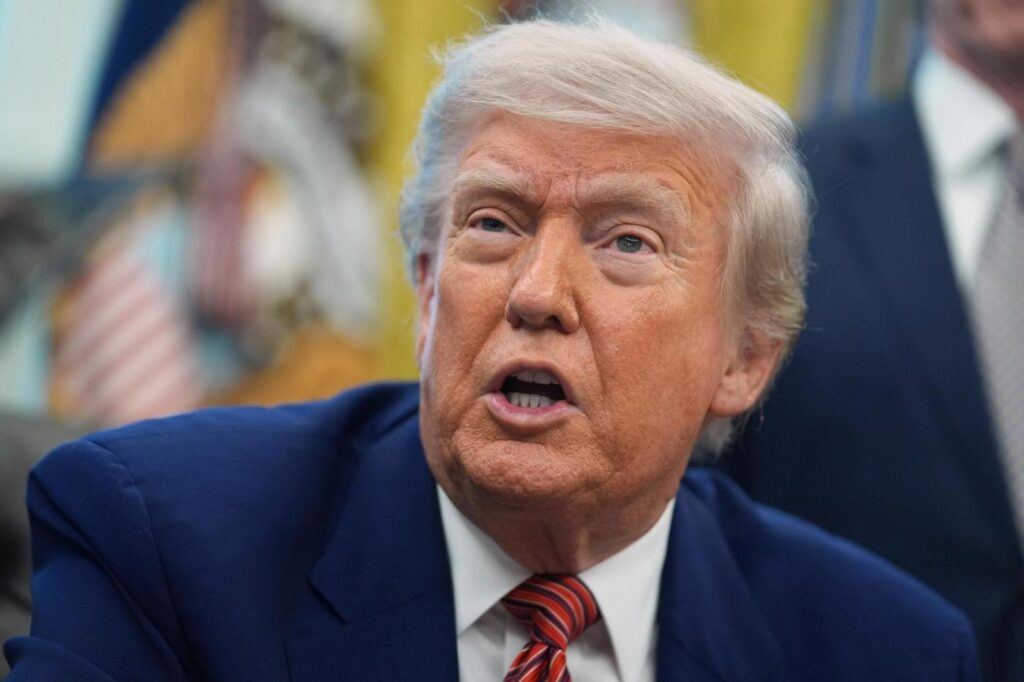
WASHINGTON (AP) — In a significant development for U.S. trade policy, President Donald Trump announced on Wednesday a new trade agreement with Vietnam that will allow American goods to enter the Southeast Asian nation duty-free. This move is expected to bolster U.S. exports while imposing a 20% levy on Vietnamese goods entering the United States.
The announcement comes as part of Trump’s broader strategy to recalibrate trade relationships and address trade deficits. On his Truth Social platform, Trump hailed the agreement as “a Great Deal of Cooperation between our two Countries.”
Background and Context
Earlier this year, Trump introduced a 46% tax on Vietnamese imports, labeling it one of his “reciprocal tariffs” aimed at countries with which the U.S. has trade deficits. This tariff was temporarily suspended for 90 days to facilitate negotiations, a pause that is set to expire on Tuesday. So far, the Trump administration has successfully negotiated a trade agreement only with the United Kingdom, alongside a “framework” agreement with China.
Mary Lovely, a senior fellow at the Peterson Institute for International Economics, commented on the deal, stating, “Vietnam has been very keen to get out from under this. This is forcing a smaller country to eat it, basically. We can do that. It’s the big countries that everybody’s keeping their eyes on.”
Economic Implications
The United States recorded a $122 billion trade deficit with Vietnam last year, marking it as the third-largest trade gap for the U.S. after China and Mexico. The new agreement aims to address this imbalance, although it remains to be seen how effectively it will alter the dynamics of U.S.-Vietnam trade.
In addition to the 20% tariffs, the U.S. will impose a 40% tax on “transshipping” — a practice where goods from other countries pass through Vietnam on their way to the U.S. This measure targets Chinese goods allegedly circumventing higher U.S. tariffs by transiting through Vietnam. However, a February study in the Harvard Business Review suggested there was “much less rerouting than previously believed.”
Strategic and Diplomatic Dimensions
Vietnam has emerged as a strategic partner in the U.S. effort to counter China’s influence in the region. American companies, seeking to diversify supply chains away from China, have increasingly turned to Vietnam. In 2023, Vietnam hosted both President Joe Biden and Chinese leader Xi Jinping on state visits, underscoring its growing diplomatic significance.
The U.S. recently elevated Vietnam to its highest diplomatic status—comprehensive strategic partner—placing it on par with China and Russia. This diplomatic upgrade reflects Vietnam’s crucial role in U.S. foreign policy in Asia.
Looking Ahead
The new trade deal with Vietnam is expected to have significant implications for both countries. For the U.S., it represents a step towards reducing trade deficits and expanding market access for American goods. For Vietnam, the agreement offers an opportunity to strengthen economic ties with the U.S., albeit with the challenge of managing the new tariffs on its exports.
Meanwhile, the Trump Organization’s $1.5 billion project to build a massive golf resort complex near Hanoi, approved by Vietnam in May, highlights the intricate web of business and diplomacy influencing U.S.-Vietnam relations.
As the expiration of the tariff suspension looms, it remains to be seen how other countries will respond to similar negotiations. The Trump administration’s ability to impose such agreements on larger trading partners like the European Union and Japan remains uncertain, with experts like Mary Lovely expressing skepticism about the feasibility of such deals.
In the coming months, the effectiveness of this agreement will be closely monitored by economists and policymakers, as it could set a precedent for future U.S. trade negotiations.






